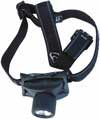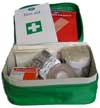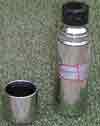Hiking / Walking Equipment and Gear
The type of walking, hiking or trekking equipment you need varies on the type of walking / hiking and the season. For general day hikes in late spring to early autumn you need to take:
To kept items dry; for carrying food and drink in; for taking rubbish back with you.
You still need to take a passport even for travel within the EU and you may need to produce your passport and EHIC card if you need treatment or visit an adjoining country.
Some week passes for cable / chair lifts require a passport photo.
Take a notepad and pen (you could take a waterproof pen).
Take Insect repellent for seasons / areas where insects may be a problem.
Choose sunglasses that filter UV rays. A cord is useful for sunglasses. For winter take goggles as well.
Use a sun cream with a high sun protection factor. Remember to take Aftersun.
A Mobile phone can be useful in emergencies but use it sensibly. The emergency services do not like receiving non-emergency calls. Make sure that it will work on a network in the country you will be visiting. Take a mains conversion plug for the charger. Make a note of useful numbers in a notepad in case you lose the mobile phone! Keep your mobile in a suitable case.
 For seeing close-ups of the mountains / wildlife. Choose a small pair. There are weather proof ones available.
For seeing close-ups of the mountains / wildlife. Choose a small pair. There are weather proof ones available.
Think what types of pictures you want to take. Consider the size and weight of the camera, whether to use a film or a digital camera. If you could be out in all weather conditions a weatherproof camera is a good investment and will protect your camera in light rain / snow conditions. If you choose a digital camera remember to take the charger and a mains conversion plug. A small tripod will allow you to take timer pictures of the whole group including you. Remember batteries / films or memory cards and a waterproof case.
Even if you are planning to stop at a restaurant or mountain hut, it is a good idea to take some food and drink (at least 1 litre) with you. Some rucksacks can take a hydration system (flat water container with tube) or use a water bottle, metal ones are light and will last longer than plastic ones. For hot drinks use a stainless steel vacuum flask and not one with a glass one. If you want more than water try one of the Isotonic drinks - some are in powder form.
Remember plastic knives, folks and spoons if you are planning to have picnic lunches.
You could take a small key ring thermometer attached to your rucksack.

 Take a small torch in case you are out when it
Take a small torch in case you are out when it gets dark and for use in emergencies. A LED one will last longer. Check the battery before you go. If you expect to be out after dark you could get a head lamp.
gets dark and for use in emergencies. A LED one will last longer. Check the battery before you go. If you expect to be out after dark you could get a head lamp.
A Satellite Navigation System Receiver will help show where you are, and if loaded with your route it can give an indication of where to go. Make sure you know how to use it and have a backup method of navigation, map & compass, - in some places, deep valleys or forests, a GPS receiver may not work correctly.
An alternative to the American GPS system is the Russian GLONASS system. There are not as many suitable receivers available but most new models use both GPS and GLONASS.
The European satellite-navigation system, Galileo, is available now and is designed to have higher availability and accuracy.
To increase the accuracy of the signals, an overlay network of satellites (called European Geostationary Navigation Overlay Service (EGNOS) in Europe, or WAAS in America, or MSAS in Japan), can help some GPS receivers provide more accurate positions.
The Garmin etrex 20x & 30x receivers use both GPS & GLONASS signals and also have EGNOS / WASS capability.
You need to know the time. You could also take one with compass / altitude and other functions.
A good quality compass can also be useful but make sure you know  how to use it - a small readily available compass is useful for quick readings.
how to use it - a small readily available compass is useful for quick readings.
You will find that most resorts signpost and mark the footpaths in their area but you should not rely on this. If you lose the path it could be hard to find you way back. For most walking, get a map with a scale of 1:25000 to 1:50000. It may be appropriate to take more than one map e.g. if the walks go over more than one map of if you need a different scale for parts of the walks.If you intend to use a GPS Receiver, make sure that the map has co-ordinates marked on it. Long & Lat is the most common and in parts of Europe the European system called UTM is used on some maps. Some countries like the UK and Switzerland have their own systems. Make sure that your GPS receiver supports the system marked on the maps. Make sure that you know how to use them and plan you route before you go.
See Books & Maps for suitable maps.
 Take a large first aid kit to keep in the hotel and a small one in your rucksack - even a little cut may need to be treated. Include blister plasters and maybe sprain bandages.
Take a large first aid kit to keep in the hotel and a small one in your rucksack - even a little cut may need to be treated. Include blister plasters and maybe sprain bandages.
Take a whistle for emergencies, and make sure you know the Emergency Signalling Codes.
If the rain continues all day, a small umbrella will help keep you dry.

Walking poles / Trekking poles are useful at all times but especially when going downhill or over rough terrain, walking poles help reduce strain on your knees, legs and back. Ones that extend are best as they can be carried in or on your rucksack when not in use and can be packed in your luggage. Most come in three sections, some in two. Some have springs inside to further reduce strain. You could just use one, but two will provide better balance and avoid you having to swap hands when going over rough terrain.
- Rucksack sizes are measured in litres - a 30 to 40 litre should be sufficient. If you are in an area with restaurants and huts then a 25 litre may be good enough. Points to consider are:
the number of pockets - Some just have a main compartment, maybe with detachable side pockets. A number of pockets are useful for small items or things you need to get to quickly. An outside mesh pocket lets wet items dry out. There may also be a pocket in the top cover and on the hip strap. - padded straps - Wide shoulder straps help take the load comfortably and a chest strap keeps the shoulder straps on your shoulders. A padded hip strap will take some of the weight and reduce backache.
- waterproof cover - The stitching will not be waterproof so a waterproof cover is useful. For Rucksacks that do not have one, you can buy a separate one. For more protection from the rain, also use a plastic liner bag inside the main compartment.
- to help keep your back dry and cool, look for a mesh or tunnel back.
- Other features - Outside straps for walking poles and other items.
It may be tempting to only take one Rucksack for your party but if everyone has their own it not only spreads the load, but think about what could happen if someone got separated.
If you will be walking over snow, take some Snow Shoes; for ice take some Crampons. You may also need an Ice Axe.
|
|
Don’t forget Walking Clothes.
A waterproof map case or cover will keep maps and directions dry and clean, but easy to read.
A map measure will help work out the distances. Get one that measures in centimetres.
Map Case or Map Cover
Map Measure

© 2005-2025
A Fielding
All Rights Reserved
|
|
| Subscribe to Hiking Alps |
| Visit this group |
